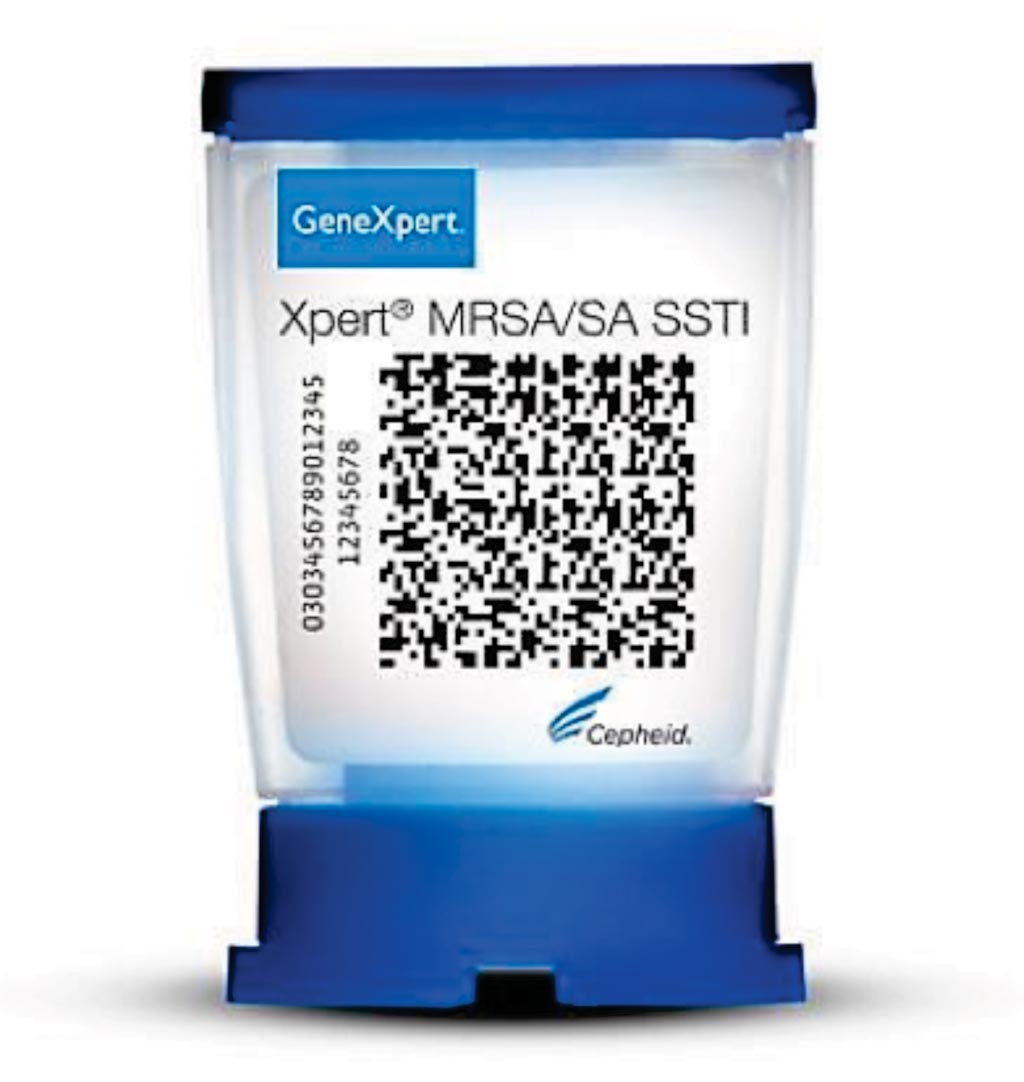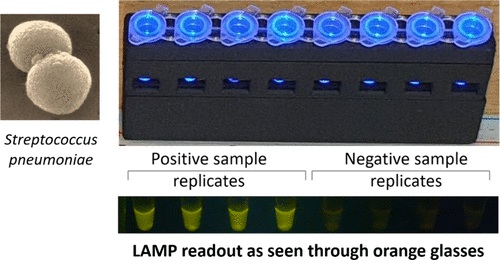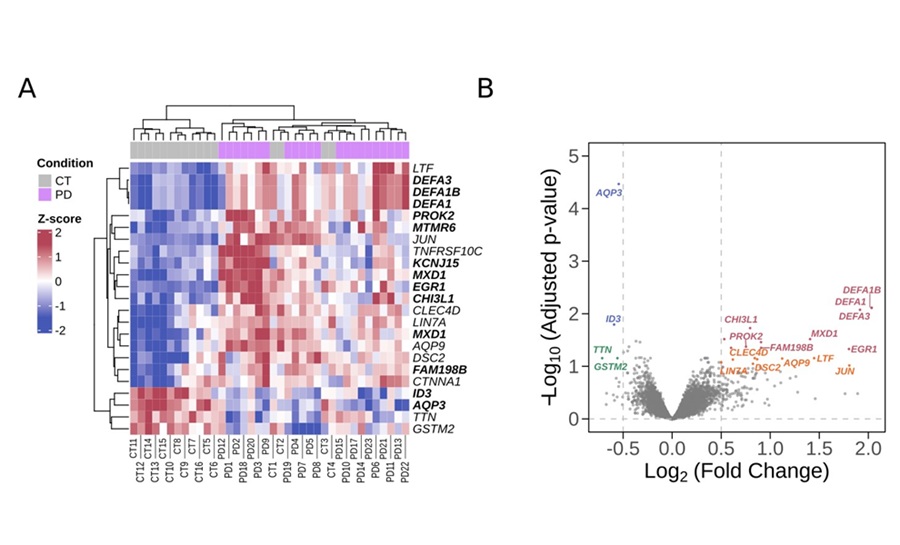Rapid Diagnostic Panel Used for Pediatric Musculoskeletal Infections
|
By LabMedica International staff writers Posted on 31 Jul 2019 |

Image: The Xpert MRSA/SA SSTI assay detects methicillin-resistant S. aureus (MRSA) & S. aureus (SA) in skin and soft tissue infections in less than one hour (Photo courtesy of Cepheid).
The findings from a retrospective analysis suggested that the use of a rapid musculoskeletal diagnostic panel, or MDP, could have shortened the time it took to identify the cause of infection, provide appropriate antibiotics and reduce the length of stay for children in hospital.
The MDP, which was recently validated in another study, combined three separate tests: the Xpert MRSA/Staphylococcus aureus skin and soft tissue infection (SA SSTI) assay, a polymerase chain reaction (PCR) assays for ermA, ermB and ermC genes to determine clindamycin resistance; and a Kingella kingae PCR assay to identify the rtxA gene. Results from the Xpert MRSA/SA SSTI assay were available within three hours, and results for the PCR assays were available by 1400 hours the following calendar day.
Scientists at the Children’s Hospital Colorado (Aurora, CO, USA) included in a study 53 children aged six months to 18 years who were admitted to the hospital with symptoms persisting for less than two weeks, had bone or joint specimens collected and were administered antibiotic therapy, excluding perioperative antibiotics. The investigators identified pathogens in 69.8% of patients (37/53) who underwent standard culturing techniques and in 13 patients (16%) who had a blood culture performed. The most commonly identified pathogen was S. aureus (47.2%), and methicillin-resistant S. aureus (MRSA) was identified in 16% of these patients. Two patients had clindamycin-resistant S. aureus, and one patient had a K. kingae infection.
The MDP identified most children with culture-confirmed S. aureus infection (88%), with three patients having MRSA. When cultured, all three patients were confirmed to have MRSA. Although the MDP identified three isolates as clindamycin resistant, culture showed that one of these isolates was clindamycin susceptible. The results showed that MDP would have saved seven hours to pathogen identification (45.6 hours; interquartile range [IQR] = 23-62) compared with standard microbiology culture techniques (52.5 hours; IQR = 36.1-65.6). Additionally, use of the MDP would have improved the time to definitive antibiotic therapy by nearly 22 hours and reduced the hospital length of stay by a median of 26.4 hours.
The authors noted that cost is an important factor when considering a new diagnostic tool like the MDA. Theoretically, the decrease in length of stay would justify its expense. Justin B. Searns, MD, a hospitalist and first author of the study, said, “No approved rapid diagnostic platforms currently exist for bone and joint specimens from pediatric patients with acute musculoskeletal infection.” The study was published on June 13, 2019, in the Journal of The Pediatric Infectious Disease Society.
Related Links:
Children’s Hospital Colorado
The MDP, which was recently validated in another study, combined three separate tests: the Xpert MRSA/Staphylococcus aureus skin and soft tissue infection (SA SSTI) assay, a polymerase chain reaction (PCR) assays for ermA, ermB and ermC genes to determine clindamycin resistance; and a Kingella kingae PCR assay to identify the rtxA gene. Results from the Xpert MRSA/SA SSTI assay were available within three hours, and results for the PCR assays were available by 1400 hours the following calendar day.
Scientists at the Children’s Hospital Colorado (Aurora, CO, USA) included in a study 53 children aged six months to 18 years who were admitted to the hospital with symptoms persisting for less than two weeks, had bone or joint specimens collected and were administered antibiotic therapy, excluding perioperative antibiotics. The investigators identified pathogens in 69.8% of patients (37/53) who underwent standard culturing techniques and in 13 patients (16%) who had a blood culture performed. The most commonly identified pathogen was S. aureus (47.2%), and methicillin-resistant S. aureus (MRSA) was identified in 16% of these patients. Two patients had clindamycin-resistant S. aureus, and one patient had a K. kingae infection.
The MDP identified most children with culture-confirmed S. aureus infection (88%), with three patients having MRSA. When cultured, all three patients were confirmed to have MRSA. Although the MDP identified three isolates as clindamycin resistant, culture showed that one of these isolates was clindamycin susceptible. The results showed that MDP would have saved seven hours to pathogen identification (45.6 hours; interquartile range [IQR] = 23-62) compared with standard microbiology culture techniques (52.5 hours; IQR = 36.1-65.6). Additionally, use of the MDP would have improved the time to definitive antibiotic therapy by nearly 22 hours and reduced the hospital length of stay by a median of 26.4 hours.
The authors noted that cost is an important factor when considering a new diagnostic tool like the MDA. Theoretically, the decrease in length of stay would justify its expense. Justin B. Searns, MD, a hospitalist and first author of the study, said, “No approved rapid diagnostic platforms currently exist for bone and joint specimens from pediatric patients with acute musculoskeletal infection.” The study was published on June 13, 2019, in the Journal of The Pediatric Infectious Disease Society.
Related Links:
Children’s Hospital Colorado
Latest Microbiology News
- High-Throughput Enteric Panels Detect Multiple GI Bacterial Infections from Single Stool Swab Sample
- Fast Noninvasive Bedside Test Uses Sugar Fingerprint to Detect Fungal Infections
- Rapid Sepsis Diagnostic Device to Enable Personalized Critical Care for ICU Patients
- Microfluidic Platform Assesses Neutrophil Function in Sepsis Patients
- New Diagnostic Method Confirms Sepsis Infections Earlier
- New Markers Could Predict Risk of Severe Chlamydia Infection
- Portable Spectroscopy Rapidly and Noninvasively Detects Bacterial Species in Vaginal Fluid
- CRISPR-Based Saliva Test Detects Tuberculosis Directly from Sputum
- Urine-Based Assay Diagnoses Common Lung Infection in Immunocompromised People
- Saliva Test Detects Implant-Related Microbial Risks
- New Platform Leverages AI and Quantum Computing to Predict Salmonella Antimicrobial Resistance
- Early Detection of Gut Microbiota Metabolite Linked to Atherosclerosis Could Revolutionize Diagnosis
- Viral Load Tests Can Help Predict Mpox Severity
- Gut Microbiota Analysis Enables Early and Non-Invasive Detection of Gestational Diabetes
- Credit Card-Sized Test Boosts TB Detection in HIV Hotspots
- Fecal Metabolite Profiling Predicts Mortality in Critically Ill Patients
Channels
Clinical Chemistry
view channel
VOCs Show Promise for Early Multi-Cancer Detection
Early cancer detection is critical to improving survival rates, but most current screening methods focus on individual cancer types and often involve invasive procedures. This makes it difficult to identify... Read more
Portable Raman Spectroscopy Offers Cost-Effective Kidney Disease Diagnosis at POC
Kidney disease is typically diagnosed through blood or urine tests, often when patients present with symptoms such as blood in urine, shortness of breath, or weight loss. While these tests are common,... Read moreMolecular Diagnostics
view channel
New Diagnostic Method Detects Pneumonia at POC in Low-Resource Settings
Pneumonia continues to be one of the leading causes of death in low- and middle-income countries, where limited access to advanced laboratory infrastructure hampers early and accurate diagnosis.... Read more
Blood Immune Cell Analysis Detects Parkinson’s Before Symptoms Appear
Early diagnosis of Parkinson’s disease remains one of the greatest challenges in neurology. The condition, which affects nearly 12 million people globally, is typically identified only after significant... Read moreHematology
view channel
ADLM’s New Coagulation Testing Guidance to Improve Care for Patients on Blood Thinners
Direct oral anticoagulants (DOACs) are one of the most common types of blood thinners. Patients take them to prevent a host of complications that could arise from blood clotting, including stroke, deep... Read more
Viscoelastic Testing Could Improve Treatment of Maternal Hemorrhage
Postpartum hemorrhage, severe bleeding after childbirth, remains one of the leading causes of maternal mortality worldwide, yet many of these deaths are preventable. Standard care can be hindered by delays... Read more
Pioneering Model Measures Radiation Exposure in Blood for Precise Cancer Treatments
Scientists have long focused on protecting organs near tumors during radiotherapy, but blood — a vital, circulating tissue — has largely been excluded from dose calculations. Each blood cell passing through... Read moreImmunology
view channel
Blood-Based Liquid Biopsy Model Analyzes Immunotherapy Effectiveness
Immunotherapy has revolutionized cancer care by harnessing the immune system to fight tumors, yet predicting who will benefit remains a major challenge. Many patients undergo costly and taxing treatment... Read more
Signature Genes Predict T-Cell Expansion in Cancer Immunotherapy
Modern cancer immunotherapies rely on the ability of CD8⁺ T cells to rapidly multiply within tumors, generating the immune force needed to eliminate cancer cells. However, the biological triggers behind... Read morePathology
view channel
New Molecular Analysis Tool to Improve Disease Diagnosis
Accurately distinguishing between similar biomolecules such as proteins is vital for biomedical research and diagnostics, yet existing analytical tools often fail to detect subtle structural or compositional... Read more
Tears Offer Noninvasive Alternative for Diagnosing Neurodegenerative Diseases
Diagnosing and monitoring eye and neurodegenerative diseases often requires invasive procedures to access ocular fluids. Ocular fluids like aqueous humor and vitreous humor contain valuable molecular information... Read moreTechnology
view channel
Cell-Sorting Device Uses Electromagnetic Levitation to Precisely Direct Cell Movement
Sorting different cell types—such as cancerous versus healthy or live versus dead cells—is a critical task in biology and medicine. However, conventional methods often require labeling, chemical exposure,... Read more
Embedded GPU Platform Enables Rapid Blood Profiling for POC Diagnostics
Blood tests remain a cornerstone of medical diagnostics, but traditional imaging and analysis methods can be slow, costly, and reliant on dyes or contrast agents. Now, scientists have developed a real-time,... Read moreIndustry
view channel
Qiagen Acquires Single-Cell Omics Firm Parse Biosciences
QIAGEN (Venlo, Netherlands) has entered into a definitive agreement to fully acquire Parse Biosciences (Seattle, WA, USA), a provider of scalable, instrument-free solutions for single-cell research.... Read more
Puritan Medical Products Showcasing Innovation at AMP2025 in Boston
Puritan Medical Products (Guilford, ME, USA), the world’s most trusted manufacturer of swabs and specimen collection devices, is set to exhibit at AMP2025 in Boston, Massachusetts, from November 11–15.... Read more
Advanced Instruments Merged Under Nova Biomedical Name
Advanced Instruments (Norwood, MA, USA) and Nova Biomedical (Waltham, MA, USA) are now officially doing business under a single, unified brand. This transformation is expected to deliver greater value... Read more






















